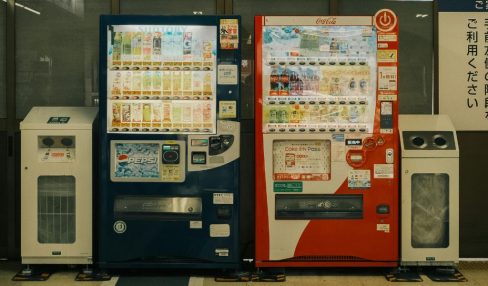Why Cultural Fit Matters More In Commercial Roles Than Ever Before
16 May 2025
6 Mins Read

Hiring in commercial industries used to focus heavily on experience, technical knowledge, and immediate availability.
Those things still matter, but they’re no longer the only priorities. Today, companies are paying closer attention to how well a person fits into the larger picture—
- The values
- The pace
- The shared goals of the team
That fit isn’t about being the same as everyone else but knowing how someone will show up in day-to-day work, how they’ll respond to challenges, and whether they’ll move in the same direction as the rest of the team.
In service-heavy or customer-facing industries, culture especially affects everything. From how teams communicate to how they represent the company to clients, cultural fit plays a direct role in daily operations.
Hiring for cultural fit is more necessary now than ever. Someone who checks all the boxes on paper but struggles to connect with the team or the company’s values creates more friction than progress.
As commercial roles continue to evolve, cultural alignment is becoming less of a “nice to have” and more of a basic requirement.
In this article, I will discuss the nuances that make hiring for cultural fit necessary for modern-day companies and work culture.
Hiring For Cultural Fit: The Starting Point

The easier approach is to build strong teams when hiring for cultural fit, or hiring is based on shared values, not just resumes. While the skills someone brings to the table are important, they’re only part of the picture.
In commercial environments where teamwork, adaptability, and communication are essential, cultural fit helps determine whether someone will thrive.
When companies hire employees who understand the team’s tone, work pace, and general expectations, everything runs smoother from the start.
Businesses looking to improve their hiring practices often consult experts. Consulting with companies like Better Talent helps employers go beyond traditional screening methods.
It adds structure to the process, making it easier to spot who actually fits, not just who interviews well.
This kind of support saves time and results in better decisions, especially when hiring for cultural fit occurs during at-scale or high-growth periods.
Lower Turnover
Turnover is costly in any industry, but it hits especially hard in fast-moving service roles. Training takes time, and replacing people adds pressure to already busy teams.
One of the more overlooked reasons people leave is a mismatch in culture. And, it doesn’t always mean that they are incapable.
On the contrary, if the day-to-day environment feels wrong to them or their work style doesn’t match the team’s, it becomes hard to stay.
Hiring people who are comfortable with the company’s pace and structure helps avoid this problem.
When someone fits well with how the team works, they’re more likely to stay, contribute, and find the job manageable. A better fit means fewer exits and a more stable workforce overall.
Stronger Teamwork
Teamwork doesn’t always depend on personalities—it often depends on shared priorities. In a fast-paced environment, teams must rely on each other.
A healthy work environment is sustained when coworkers can talk to each other without second-guessing intentions or working styles.
When people value the same approach to solving problems or managing tasks, collaboration becomes much simpler.
And you know what’s interesting? That kind of alignment rarely happens by accident. It comes from being thoughtful and hiring for cultural fit.
Bringing in people who understand what matters most to the team, whether it’s being responsive, staying flexible, or moving quickly, helps everyone work better together.
Culture Shows Outward
Clients and customers notice more than companies think. In commercial roles, a team’s internal culture often shows up in
- How people answer the phone
- Respond to problems
- Interact during meetings
If there’s tension or disconnect behind the scenes, it tends to spill out into client-facing conversations.
On the other hand, when teams are aligned internally, that confidence and clarity come through.
And guess what? A team that operates with shared values tends to represent the company more consistently.
Customers don’t hear different stories depending on who they talk to. There’s a natural tone and rhythm that comes from people working in sync.
Fewer Conflicts
Misunderstandings are part of any workplace, but some are avoidable. On one hand, when a team shares a general way of thinking and working, day-to-day conflicts drop.
Otherwise, when people work from different assumptions about how things should be done or how teams should function, tension that doesn’t need to exist can arise.
These issues slow things down, shift focus away from priorities, and affect how people feel at work.
Managers spend less time mediating and more time actually leading, which can change how a team functions over time.
Better Under Pressure
High-pressure situations don’t always give people time to check in or regroup. Teams with a shared way of handling pressure tend to respond more smoothly. Commercial roles often come with
- Tight timelines
- Last-minute changes
- Unexpected client needs
When people work in a culture that fits how they handle pressure, their responses feel more natural and coordinated.
There’s less scrambling and more trust that the team knows how to handle the moment without needing much direction.
Improved Cohesion
Some teams never really click, no matter how talented the individuals are. Often, that’s because the group doesn’t feel like a unit.
It feels more like a jumbled-up mess, more of a mix of people working next to each other than with each other.
Cohesion isn’t about everyone getting along perfectly. It’s about being able to rely on the group as a whole.
When hiring for cultural fit occurs, cohesion becomes easier to build. People communicate more clearly and adjust to one another more quickly.
Furthermore, it allows workers to better understand what to expect from teammates. This promotes teamwork and, therefore, leads to employee retention.
It doesn’t eliminate all challenges, but it does create a working environment where group effort feels more natural and less forced.
Less Oversight Needed
In roles where things move fast, no one has time to micromanage. Still, some employees need more direction than others, not because of skill but because their instincts don’t align with the team’s operating procedures.
That kind of mismatch often leads to repeated check-ins, re-explaining expectations, and corrections that could have been avoided.
Hiring for cultural fit promotes hiring people who already work in a way that fits the company’s approach, removing a lot of that extra oversight.
Managers still provide guidance, but they don’t have to manage every step. The work gets done with fewer reminders, and trust builds faster across the team.
Supports Growth
Long-term success often comes down to flexibility—who’s able to take on new roles, shift into different responsibilities, or take the lead when something changes.
That kind of internal growth works best when employees are already aligned with the company’s direction and values.
When people fit the culture, they’re more likely to grow within it. They understand the three important questions, which make transitions smoother and internal promotions more successful—
- What does the company value?
- How do teams communicate?
- What kind of behavior is rewarded?
Hiring For Cultural Fit: It Works!
Therefore, hiring for cultural fit shapes how people work, interact, and stay connected to the work itself.
In fast-moving environments, that alignment becomes a foundation. It helps companies hire smarter, reduce turnover, and keep teams working together toward the same goals.
Hiring for cultural fit doesn’t mean lowering standards or avoiding diversity. It means paying attention to how someone fits into a team’s workflow.
Furthermore, it means making decisions that support the group’s long-term success, not just the individual.



















Comments Are Closed For This Article